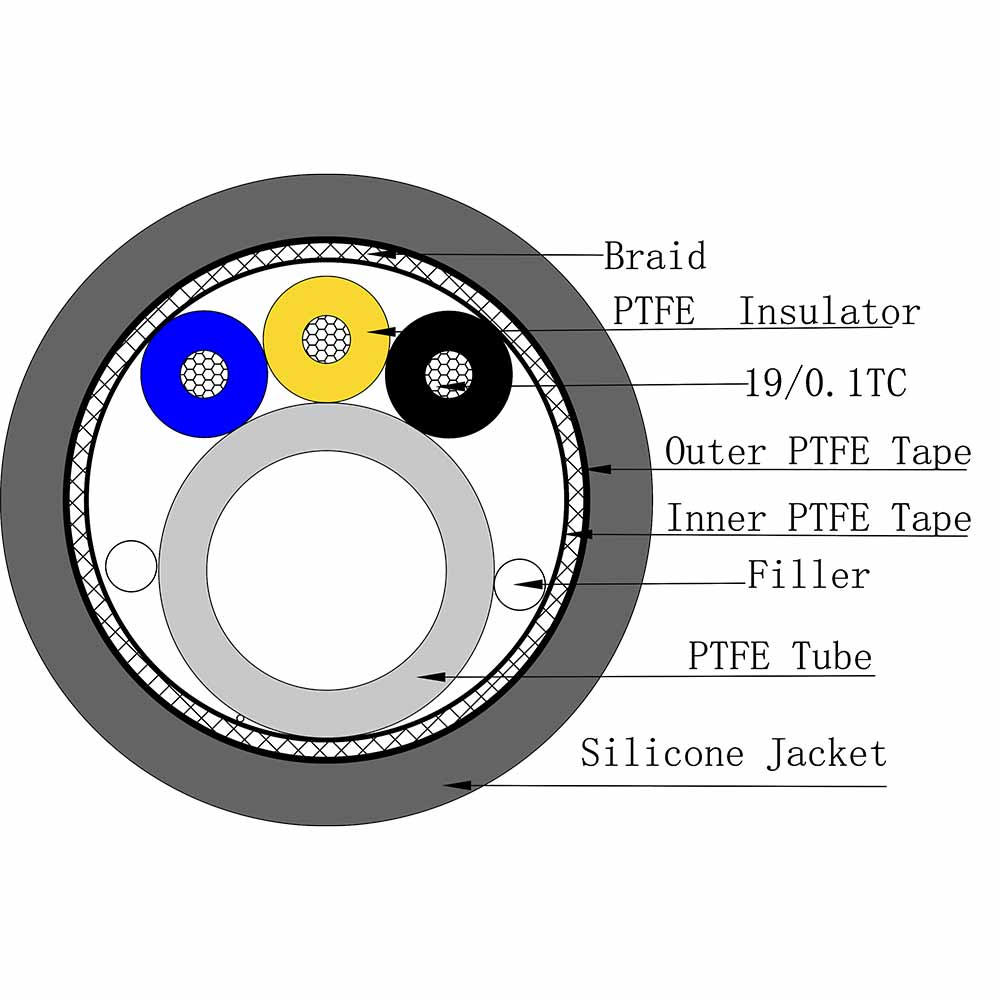Silicone Rubber Argon Cable For Argon Plasma Coagulation Electrosurgical Units argon electrode
Argon plasma coagulation (APC) is a medical treatment that uses argon gas to deliver high-frequency electrical energy to the body’s tissues, primarily in endoscopic procedures. In this process, the argon gas is ionized to create plasma, which is then directed at the tissue to coagulate and remove it.
The argon cable for argon electrode is a critical component of the APC system. It connects the APC generator to the handpiece, which is used to deliver the plasma to the tissue. A properly designed and selected argon cable is essential for the success of the procedure.
Guide to design an argon cable
When designing an argon cable for APC, several factors must be considered. These include the cable’s length, diameter, insulation, and material. The length of the cable should be sufficient to reach the targeted tissue, while the diameter should be large enough to handle the high-frequency electrical current.
Conductor
For the conductor, silver-plated copper or tinned copper is an excellent choice. Silver plating provides superior electrical conductivity and corrosion resistance, while tinned copper offers good electrical conductivity and durability. Both materials are commonly used in medical devices and are considered safe for use in APC treatment argon electrode.
Insulation
The insulation material is also important, as it must be able to withstand the high voltages and prevent electrical arcing. Fluoropolymers, such as PTFE or FEP, are commonly used for insulation in APC cables due to their excellent electrical properties and resistance to high temperatures.
Outer jacket
the recommended materials for the outer jacket of the argon cable is silicone rubber. This material has excellent thermal and electrical insulation properties, making it ideal for use in high-temperature applications such as APC treatment. Additionally, silicone rubber is highly flexible and can withstand exposure to various chemicals and UV light.
A very important issue:the Silicone rubber must be Biocompatible,which meet ISO10993.
Cable length
The length of an argon cable should be determined according to the treatment needs. Generally, the length is between 2-3 meters, the cable should be as short as possible to minimize electrical losses and should choose a larger conductor diameter to minimize voltage drop when the cable must be longer.
Terminal connection:
The terminal connection of an argon cable should have good contact performance and conductivity, ensuring the flow and stability of argon.
Other Components
In addition to these design considerations, it is also essential to select the appropriate argon cable for the specific APC procedure. For example, some procedures may require an argon cable with an aritube, which is a small tube inside the cable that allows for the insufflation of argon gas directly into the tissue.
When there is tube for argon gas,there is one more factor need to consider:
Inner and outer diameter: The inner and outer diameters of an argon cable also need to be determined according to the gas flow rate and usage requirements. Larger inner and outer diameters can improve gas flow and stability, but will increase the weight and volume of the cable.
Or in order to enforce the argon cable with airtube,we can add a kevlar braiding to fix the wires and tube,it can also increase the durability of the cable.
When airtube is not included in a cable for argon cable,another extra essential component of the APC system is the argon insufflation needle. This needle is used to insufflate the argon gas into the targeted tissue and is inserted through the endoscope. The needle’s design and material are crucial, as they must be able to withstand the high-pressure flow of the argon gas and prevent leakage.
When selecting an argon insufflation needle, the needle’s size, shape, and material must be considered. The needle’s size should be appropriate for the targeted tissue, while the shape should allow for easy insertion and maneuverability. The material used for the needle should also be chosen carefully, as it must be able to withstand the high-pressure flow of the argon gas and prevent leakage.
Guide to Selecting an Argon Cable/argon electrode
- When selecting an argon cable, it is necessary to consider the treatment needs and usage environment comprehensively. Here are some guidelines for selecting an argon cable:
- Cable material: Choose a material with good insulation and conductivity performance.
- Cable length: Determine the cable length according to the treatment needs.
- Inner and outer diameter of cable: Determine the inner and outer diameters according to the gas flow rate and usage requirements.
- Terminal connection: Choose a terminal connection with good contact performance and conductivity.
Conclusion
the argon cable for argon electrode is critical component of the APC system. Proper design and selection of these components are essential for the success of the procedure. When designing an argon cable or selecting an argon insufflation needle, several factors, including length, diameter, insulation, and material, must be considered. By selecting the appropriate components, healthcare professionals can ensure that patients receive safe and effective APC treatment.

